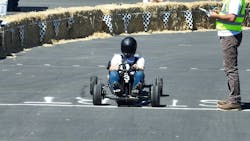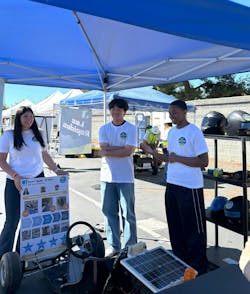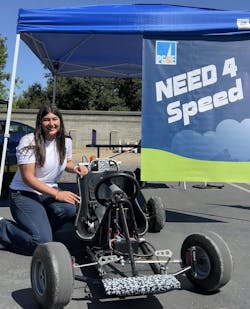PG&E’s Inaugural EV Challenge Paves the Way for the Future of Engineering
Pacific Gas and Electric Company (PG&E) is helping to teach the next generation of electric engineers and is using creative ways to teach younger people about the profession. This summer, PG&E launched its inaugural EV Challenge as part of its high school internship program. Over the course of eight weeks, the interns were challenged to design, build, and race fully operational, solar-powered electric go-karts, while also diving into real-world data analytics and grid reliability projects alongside PG&E engineers.
Hosted at PG&E’s Electric Safety Academy in Livermore, California, the program culminated in a friendly competition where three student teams went head-to-head in categories ranging from energy efficiency to teamwork and speed.
For Ariana Bajaj, a 17-year-old senior from Portland, Oregon, the EV Challenge was a turning point. Initially introduced to engineering through her FIRST Robotics Competition robotics team and research work, she applied to the internship to broaden her exposure to the electrical space. By the end of the summer, she’d shifted her outlook.
“This program gave me clarity. I came in unaware of the potential of the electrical grid and the growing need for clean energy,” Bajaj said. “But after building a working EV and analyzing real utility data, I developed a deeper understanding of various engineering disciplines, cultivating a space I am excited to work with and contribute to.”
Ariana was a member of the team NEED 4 Speed, which ultimately won the competition, scoring highest across all judged categories. Together with teammates Xavier Nero and Patrick Chen, she tackled the technical challenges of wiring motors, calibrating brake systems, and optimizing battery performance.
While the race was a highlight, Ariana said the most meaningful win came from the teamwork category - an area where judges evaluated peer collaboration, safety practices, and effective communication.
The EV Challenge was only part of the summer curriculum. Interns also learned to work with large datasets and build presentations on power outage trends. Beyond the technical work, what stood out most to Ariana was the human side of engineering.
“The biggest thing I took away is the importance of communication,” she said. “Whether you’re fixing a wiring issue or analyzing data, you have to be able to listen, adapt, and support each other.”
For PG&E, getting the next generation of electric engineers excited about the work is a critical part of building the grid of the future. Shay Bahramirad, Vice President of T&D Electric Engineering, sees the development of the talent pipeline as essential not only for the future of the electric engineering profession but also for building and maintaining a grid capable of meeting the challenges ahead: “As a society, we have a tremendous need to build capacity and enable the clean energy future we are all working toward. It is so encouraging to see these young engineers putting their brain power and hard work into something that will be vital for everyone.”


